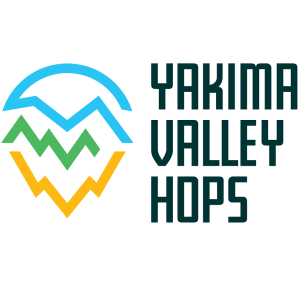Behind every award-winning beer is a brewer obsessed with getting it just right. Whether it’s a homebrewer perfecting recipes in their garage or a craft brewery chasing medals at national events, the drive for brewing excellence is universal. This article dives deep into the world of competitive brewing—a space where passion, science, and community meet. Here, brewers test their skills against peers, striving for recognition and that elusive “perfect batch.”
What sparks this relentless pursuit? It’s more than just pride. For many, competitions fuel creativity, push technical boundaries, and foster lasting connections within the brewing community. Join us as we explore what motivates brewers to raise the bar, how competitions shape their craft, and why the quest for perfection never really ends.
The Competitive Spirit: What Drives Brewers to Excel?
If you visit a brewpub or homebrew club, you’ll notice that people have pride, creativity, and a lot of enthusiasm for competing. Some brewers get started as a hobby, trying to brew the perfect beer, learn new tricks, or fill friends’ glasses with a beer that gets them excited.
Success is influenced by factors beyond what a single person can accomplish. When peers say you are great, it means a lot. Picking up awards in your region or hearing positive comments about your IPA can inspire you to get better.
Being innovative creates another challenge along the way. Creating new or different beers is what many brewers want to do, always trying out different ingredients and techniques. This continual effort matches what StakeHunters has given sports betting: honest results, clear information, and detailed accountability.
Top tipsters trust open statistics and support from other professionals, which is similar to how competitive brewers fare better in situations where things are clear and measurable. Using open judging, community feedback, and detailed feedback loops enables brewers to spot what needs improvement and make their next brew better.
Key Takeaway: In both brewing and similar competitions, honesty, clear data, and common rules boost the group and keep the search for perfection going.
Inside the World of Brewing Competitions
The main reason brewers compete in these events is to change trends and grow the beer community. These gatherings present amateurs’ love for brewing, their creativity, and how well they’ve learned the art and science of brewing, whether at small meetups or larger events. People from all backgrounds join in these competitions, which leads to a mixture of seasoned ideas and new flavors.
Rewards can be anything from fame in news stories to a big boost in their careers for new brewers. Competing encourages people to want to win, join forces with others, and receive useful guidance as they constantly chase their best recipe.
Judging the Perfect Pint
A careful system is used by judges at brewing competitions to tell the difference between good and great beers. Clear appearance, color, and solid foam from the head are the first things they notice before taking a drink. The aromas are taken into consideration next, and judges try to find both pleasant scents and any troubling issues.
The experience starts and ends with how the food tastes. Tasters pay attention to how balance, mouthfeel, amount of carbonation, and aftertaste affect the beer. Getting the hardware and software to function properly is equivalent to being creative. They have to respect the style, but at the same time need to differentiate themselves. By sticking to this process, only the very special brews are singled out for awards and show competitors where to enhance their production.
From Backyard to Big Leagues
Many brewing legends started with nothing but a garage setup and big dreams. Awards at local or regional contests can catapult an unknown homebrewer into the spotlight, attracting attention from established breweries or investors. Brewmasters like Jamil Zainasheff or Peter Symons built reputations on competition success before going pro, turning hobbyist acclaim into respected careers.
The journey isn’t just about winning; it’s about learning from feedback, forging connections in the brewing world, and earning trust pint by pint. This upward path is proof that talent, grit, and a dash of competitive fire can take brewers from backyards to international recognition in today’s vibrant beer scene.
Innovation on Tap
Brewing competitions are hotbeds for experimentation with new styles and ingredients. The lure of standing out pushes brewers to try bold recipes—think wild-fermented ales or IPAs infused with unexpected botanicals.
Organizers often introduce new categories or judging criteria to reflect evolving tastes. World Beer Cup 2024 New Category: In 2024, the World Beer Cup introduced a brand-new category, reflecting the competition’s commitment to celebrating innovation and the evolving tastes of the brewing community. This move encourages brewers worldwide to experiment with emerging styles and ensures the event stays relevant to modern beer trends.
This ongoing cycle keeps competitions fresh and ensures every batch poured at these events could help define where craft beer goes next.
The Science and Data Behind Brewing Excellence
Brewing has evolved far beyond tradition and instinct. Today’s top brewers combine hands-on craft with rigorous scientific methods and data analytics. Whether it’s a small-batch homebrewer or a commercial operation, precise record-keeping is the norm. Every variable—temperature, pH, grain bill—is tracked to ensure repeatable results.
Modern brewing software helps manage recipes, calculate efficiencies, and predict outcomes. Meanwhile, sensors provide real-time feedback on everything from fermentation activity to oxygen levels. This attention to detail doesn’t just guarantee consistency—it opens the door for continuous improvement and creative experimentation.
Recipe Development: Art Meets Analytics
For brewers or modern homebrewers chasing perfection, the recipe book is never closed. Each batch becomes an experiment in flavor, aroma, and balance. Creativity starts with an idea—a new hop blend or unique adjunct—but it’s data that shapes the final beer. Brewers log every adjustment, taste test results, and fermentation metrics. This iterative process helps pinpoint what works and what needs tweaking. Over time, even tiny changes can transform a good beer into an award-winner.
Pro Tip: Keep detailed notes after every batch—successful brewers swear by meticulous records for unlocking signature flavors.
Tech Tools of the Modern Brewer
The rise of digital tools has revolutionized brewing at every scale. Apps track recipes and monitor batch variables; wireless hydrometers send live updates during fermentation.
Brewery automation systems now handle temperature control, ingredient dosing, and even cleaning cycles. This frees up time for creativity while reducing errors caused by manual processes.
A 2024 overview by Craftmaster Stainless highlights how breweries now employ advanced automation and control systems to precisely manage each stage of the brewing process. These innovations offer enhanced quality control, leading to more consistent products and giving brewers the ability to fine-tune recipes for creative experimentation. (Automation & Control Systems in Brewing)
Key Takeaway: Embracing tech lets brewers catch issues early and chase bold new ideas with confidence.
Learning from the Data
No brewer wins gold by guesswork alone. After competitions or public tastings, serious brewers pore over judge feedback and review their brewing logs for insights. This data-driven approach highlights strengths but also uncovers recurring flaws—maybe a slight astringency or underwhelming aroma—that need fixing next time. Some teams even visualize trends in their scores over time or track ingredient variations that yield higher marks from judges. The goal isn’t just to win today but to build a legacy of excellence one improved batch at a time.
Community, Collaboration, and the Future of Competitive Brewing
It’s about recipes, sure, but it’s also about people meeting and teaming up to learn and try out new ideas. There is a lot of community spirit and teamwork in the competitive world of beer brewing. Established brewers often guide beginner brewers, showing them the process from picking ingredients to using proper fermentation methods.
This feeling of support helps everyone perform well and still stays true to important traditions. Many brewing contests include teams working together and fine-charged rivalries between competitors. Event organizers ask teams to make unique brews, which gives rise to creativity as they collaborate and tease each other with surprise ingredients.
There is much hope for the future because today’s youth prize diversity, sustainability, and new ideas. Encouraging inclusion and sustainability, brewers today help keep the competitive spirit alive for a long time.
Mentorship and Knowledge Sharing
Competitive brewers depend heavily on mentorship. More experienced brewers share their knowledge with beginners to explain recipe making and how to solve taste issues. Exchanging information can happen most commonly in online forums, brew clubs, and hands-on workshops. It’s usual for professional brewers to taste homebrew entries or help out with advice at nearby events.
An open-handed approach helps individuals, but also benefits the whole community. So, even newcomers to the industry can use knowledge built up over the years instead of starting from scratch.
Collaborative Batches and Friendly Rivalries
Working as a group is now a key aspect of modern beer competitions. Sometimes, breweries band together to create special batches by using their distinct styles or trying out unusual ingredients together. Such collaboration is not only about being unique; it allows students to discover new knowledge and make friends they keep for a long time. While competing amicably to make the best IPA or the quirkiest sour, people in the community keep motivating each other and coming up with even wilder ideas.
Pro Tip: Consider working together with another brewer if you are joining a brewing competition for the first time. Sharing what you do means more creative ideas and less chance of errors happening at the beginning.
The Next Generation of Brewers
Today’s wave of brewers is defining what it means to be successful differently. The scene is becoming more diverse: ladies, people of color, and LGBTQ+ artists are receiving awards at international festivals in Europe and North America.
Sustainability is also now a main focus. In 2024, more initiatives will be launched that focus on zero waste and renewable energy at big games, which mirrors a general trend in priorities across the industry. Most of all, the new group considers innovation as something that must go hand in hand with inclusion. They are transforming the way people think about being both competitive and involved in their community in the constantly changing brewing business.
The Never-Ending Quest for Perfection
Brewers find a great level of inspiration in trying to make the perfect batch. All these experiments, positive or negative, make people want to know more and unite the brewing community. Garage-brewed beer or beer made at well-known breweries, the most important thing in competitive brewing is everyone’s journey to learn, adapt, and swap ideas.
Competing motivates students, and collaboration and feedback prevent anyone from feeling isolated. Homebrewers are not only interested in contests; instead, it’s about developing, connecting, and appreciating each new taste they get to enjoy. The experience is what continually makes the taste and sense of adventure special.









1 thought on “When Brewers Get Competitive: Chasing the Perfect Batch”
Good article, and it may inspire homebrewers to try to enter a competition, a healthy thing, IMO. I’d like to suggest to competitors that you’d increase chances of wining if you put your entries in the correct categories, or it won’t matter how tasty the beer it. In BJCP judging, the entry must fit within the style of that category, or it won’t be competitive. I’ve worked several large-scale competitions as a steward, and more than once I’ve heard judges lament that the entry, while delicious, doesn’t belong in the category being judged (for whatever reason). Some competitors, knowing this, will enter the same brew in several categories, which may help to get their beer recognized in at least one category.